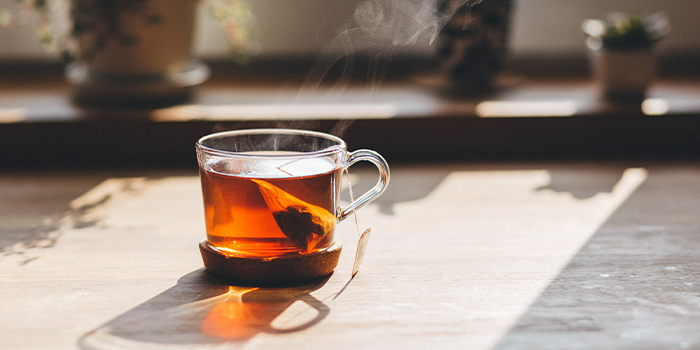
Autumn may be the season of Pumpkin Spice and Apple Cider, but as the days get colder, don’t sleep on another delicious hot beverage: tea. Did you know there are only four different types of teas? Sit down and let’s spill the tea, on these teas.
When it comes to understanding everything tea, you might be surprised to know that all teas actually originate from the same plant, yet each has their own distinct flavor profiles and characteristics. Tea leaves are picked from a small evergreen plant, oxidized, and dried. Like coffee roasting, the oxidation process is what distinguishes each tea flavor.
There are actually only four different types of teas – white, green, oolong, and black. Herbal tea, commonly mistaken for a fifth type of tea, is actually not made from any tealeaves; instead, they are made from herbs, fruits, leaves, flowers, and other plant parts. It is common to also see herbal teas referred to as tisanes or herbal infusions to prevent confusion with true teas.
Types of Tea
Tea all starts out looking the same, but once they’re plucked everything changes. The amount of oxygen these leaves are exposed to helps determine what type of tea these little leaves will become.
Black Tea is rich and robust in flavor and often has a dark amber color when properly brewed. This strong tea is rolled and cut in a process known as CTC (cut, tear, and curl) before fully oxidized and is more commonly seen as a bagged tea as a result. The leaves can sometimes be too small to steep as a loose-leaf. You’ll see this tea around the world in China, referred to as red tea, in India as masala chai or Darjeeling tea, and in Thailand as Thai iced tea, a sweetened with evaporated milk.
Oolong Tea is only partially oxidized and might be referred to as “semi-oxidized” tea. This would put them between black and green teas in terms of oxidation levels, and as such, they can have the complexity and color of black tea while having the bright and fresh notes of a green tea. Popular oolongs are Dan Cong and Da Hong Pao, which despite their darker color, have lighter flavor with floral notes.
Green Tea has undergone a mild oxidation process – a little more than white tea, but not quite as much as black or oolong teas. This versatile category of teas can be found all over the world from Moroccan Mint Tea which is often sweetened with copious amounts of sugar, to Japanese Genmaicha Green Tea which is blended with puffed brown rice, to China’s Bi Luo Chun Green Tea or “Snail Spring” green tea.
White Tea is the youngest and most delicate tea. It’s actually picked as the leaves are just little buds and undergoes very little oxidation. These delicate teas have a subtle sweetness, and can be blended with herbs and flowers like white peony and jasmine.
Tea Infographic
Let’s Talk Caffeine
One common misconception is that tea is “better” than coffee because it has less caffeine. In reality, it’s not better or worse, it’s mostly based on personal preference and your own reaction to caffeine.
The average 8 oz cup of brewed black tea has about 47 mg of caffeine, where an 8 oz cup of brewed coffee has about 96 mg of caffeine. This, of course, can vary quite a bit based on brewing time, processing, and more.
The Dietary Guidelines for Americans advises that up to 400 mg of caffeine per day is a safe amount for most healthy adults.
More than Just a Tea Party
A cup of steaming hot tea is absolutely delicious, but don’t forget that you can play around with tea in so many different ways!
For starters, there’s the ever-popular Matcha. Make a matcha latte, Iced Lemon Cucumber Matcha, or try Dalgona Style Matcha if you’re feeling adventurous.
If green tea isn’t your jam, but you still love a latte, try making a London Fog, a latte with Earl Grey tea, or a Chai Latte. If you’re looking for something on the cold side, try Boba Tea, a popular Taiwanese drink that contains tea, milk, sugar, and tapioca pearls.
